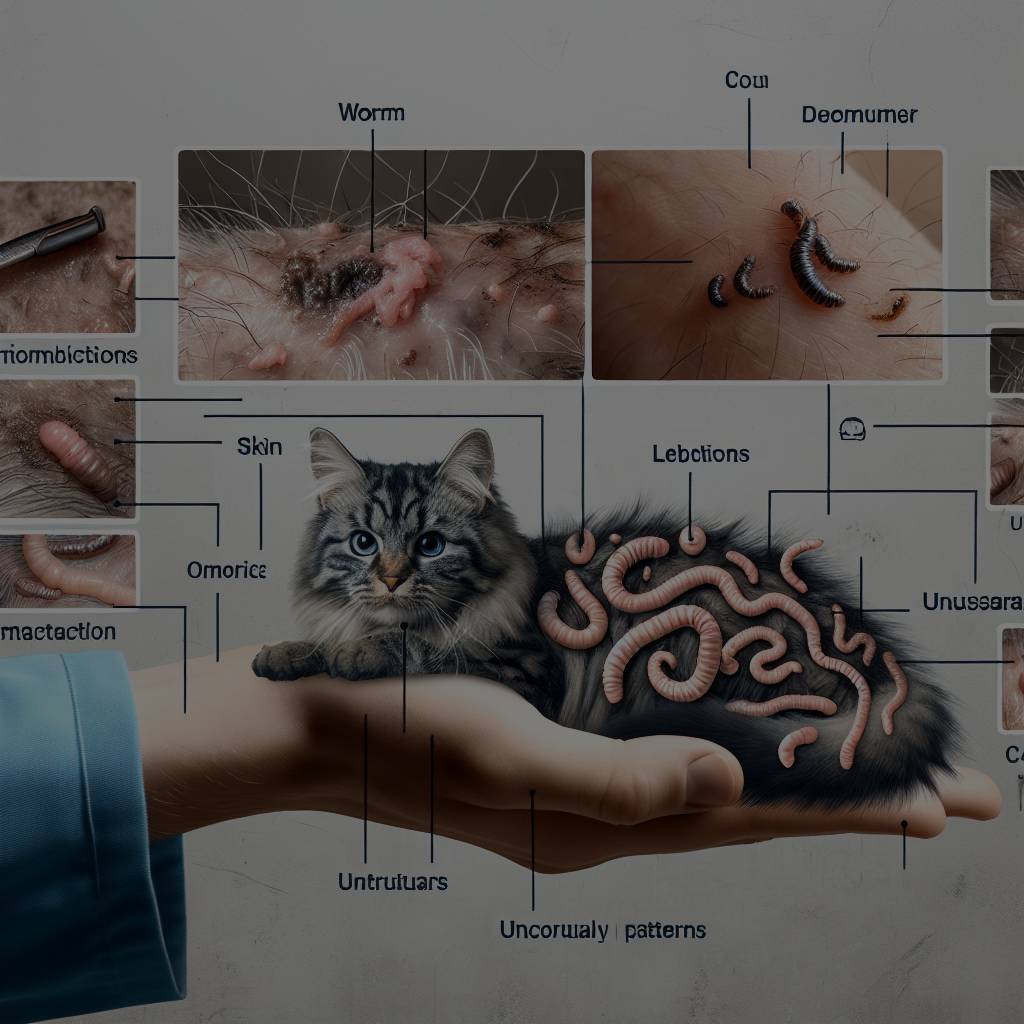
Identifying worm signs in cats is crucial for maintaining the health and well-being of our feline companions. While some worm infestations may not show obvious symptoms, it is important to be vigilant and observe any changes in your cat’s behavior or appearance. In this article, we will discuss the common signs of worm infestation in cats, the physical symptoms of worms in felines, and how to recognize parasitic worms in cats.
Common Signs of Worm Infestation in Cats
One of the most common signs of worm infestation in cats is the presence of worms in their feces. You may notice small white or brown worms in your cat’s stool, which is a clear indication that they are infected. Another common sign is vomiting, especially if you see worms in the vomit. Additionally, cats with worms may exhibit weight loss, a dull coat, and a bloated abdomen. If you notice any of these signs, it is important to consult your veterinarian for proper diagnosis and treatment.
Physical Symptoms of Worms in Felines
Aside from visible signs of worms in the feces or vomit, cats with worm infestations may also show physical symptoms. These can include diarrhea, constipation, lethargy, and a decreased appetite. Some cats may also experience coughing or difficulty breathing if the worms have migrated to the respiratory system. It is important to monitor your cat’s health closely and seek veterinary care if you notice any of these symptoms.
Recognizing Parasitic Worms in Cats
There are several types of parasitic worms that can infect cats, including roundworms, tapeworms, hookworms, and heartworms. Each type of worm may exhibit different signs and symptoms in cats. Roundworms, for example, can cause a potbellied appearance in kittens and may be visible in their feces. Tapeworms, on the other hand, may cause segments of the worm to be present near the anus or in the stool. It is important to be able to recognize the different types of worms in order to provide the appropriate treatment for your cat.
Identifying worm signs in cats is essential for maintaining their overall health and well-being. By being aware of the common signs of worm infestation, observing physical symptoms, and recognizing the different types of parasitic worms that can infect cats, you can help ensure that your feline friend receives the necessary treatment and care. Remember to consult your veterinarian if you suspect that your cat may have worms, as they can provide an accurate diagnosis and recommend the appropriate course of action to eliminate the parasites and keep your cat healthy.
Certainly! Here’s an example of a “You might be interested in” paragraph that includes naturally integrated Wikipedia links related to the topic: — Speaking of feline health, you might be interested in learning more about the types of worms that commonly affect cats. For instance, roundworms are one of the most prevalent parasites in felines, and you can read more about them on their [Wikipedia page](https://en.wikipedia.org/wiki/Roundworm) (opens in a new tab). Additionally, if you’d like to understand how tapeworms affect different animals, including cats, be sure to check out this [informative article](https://en.wikipedia.org/wiki/Tapeworm) (opens in a new tab). Heartworm disease, although more commonly associated with dogs, can also infect cats, and you can read more about it [here](https://en.wikipedia.org/wiki/Heartworm) (opens in a new tab). By familiarizing yourself with these parasites, you can better protect and care for your feline friend. —










